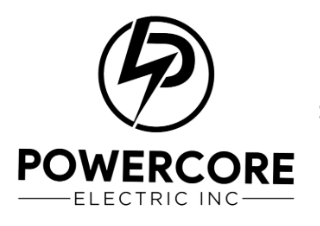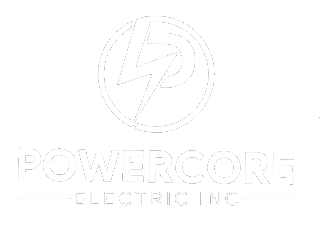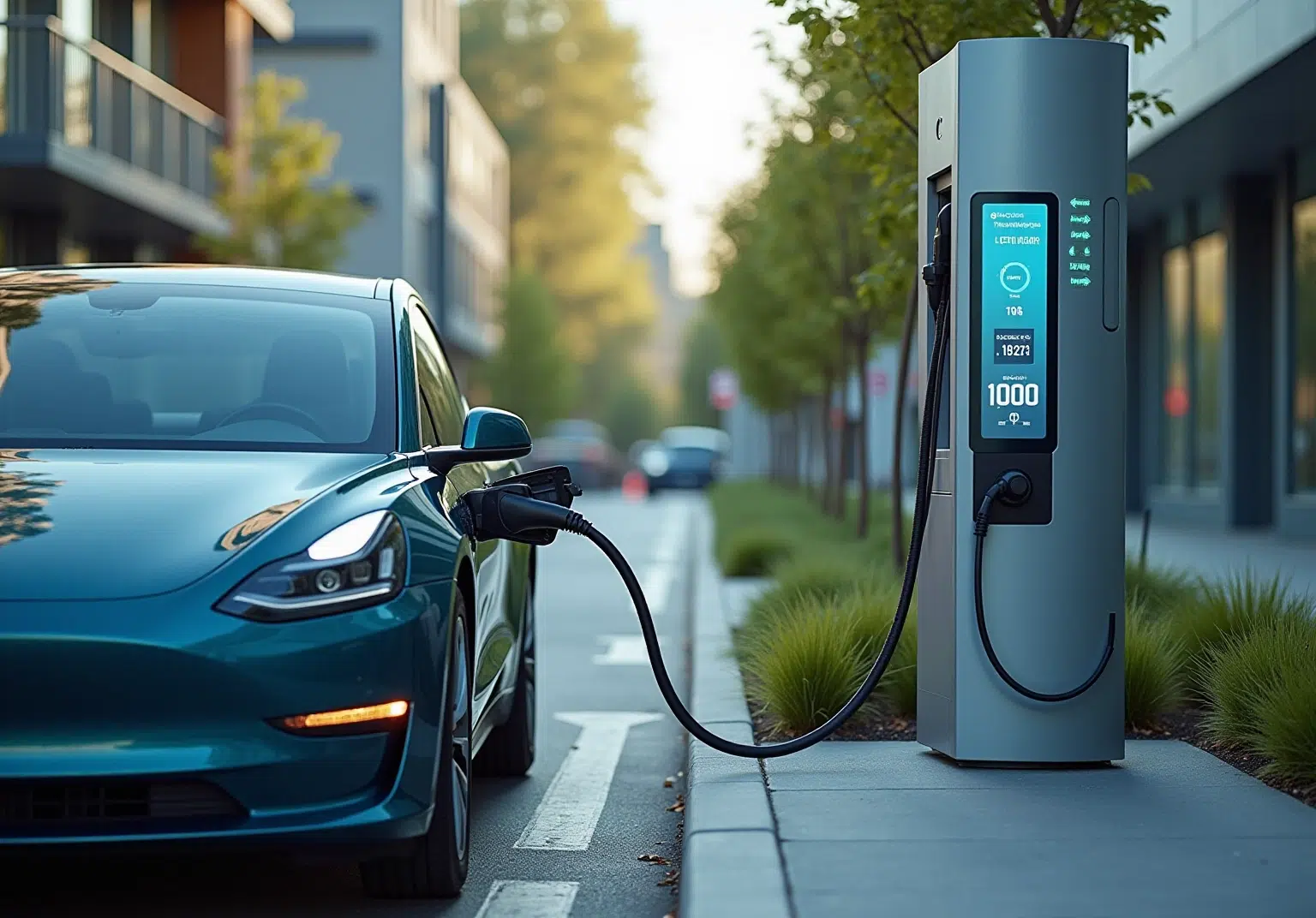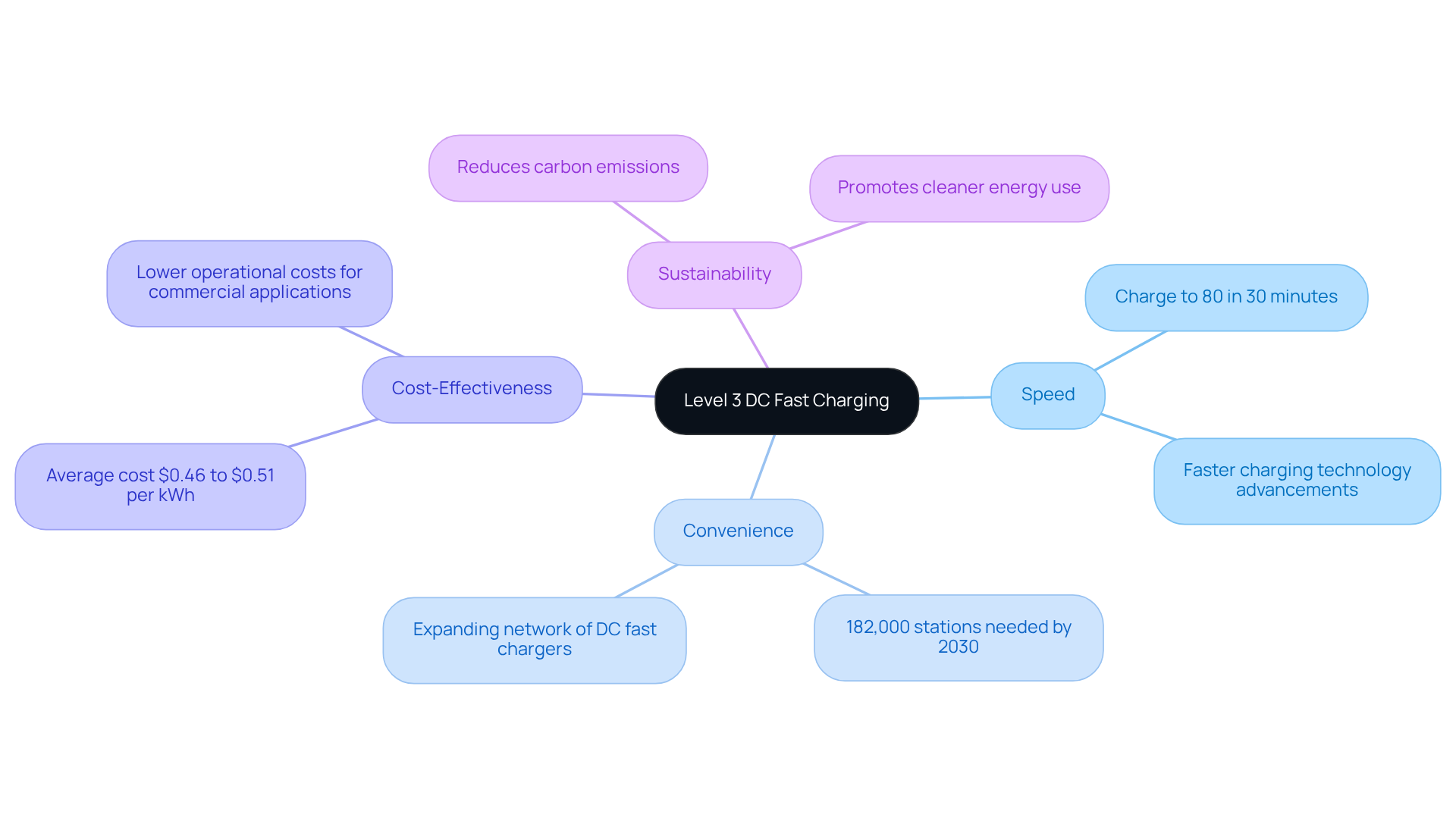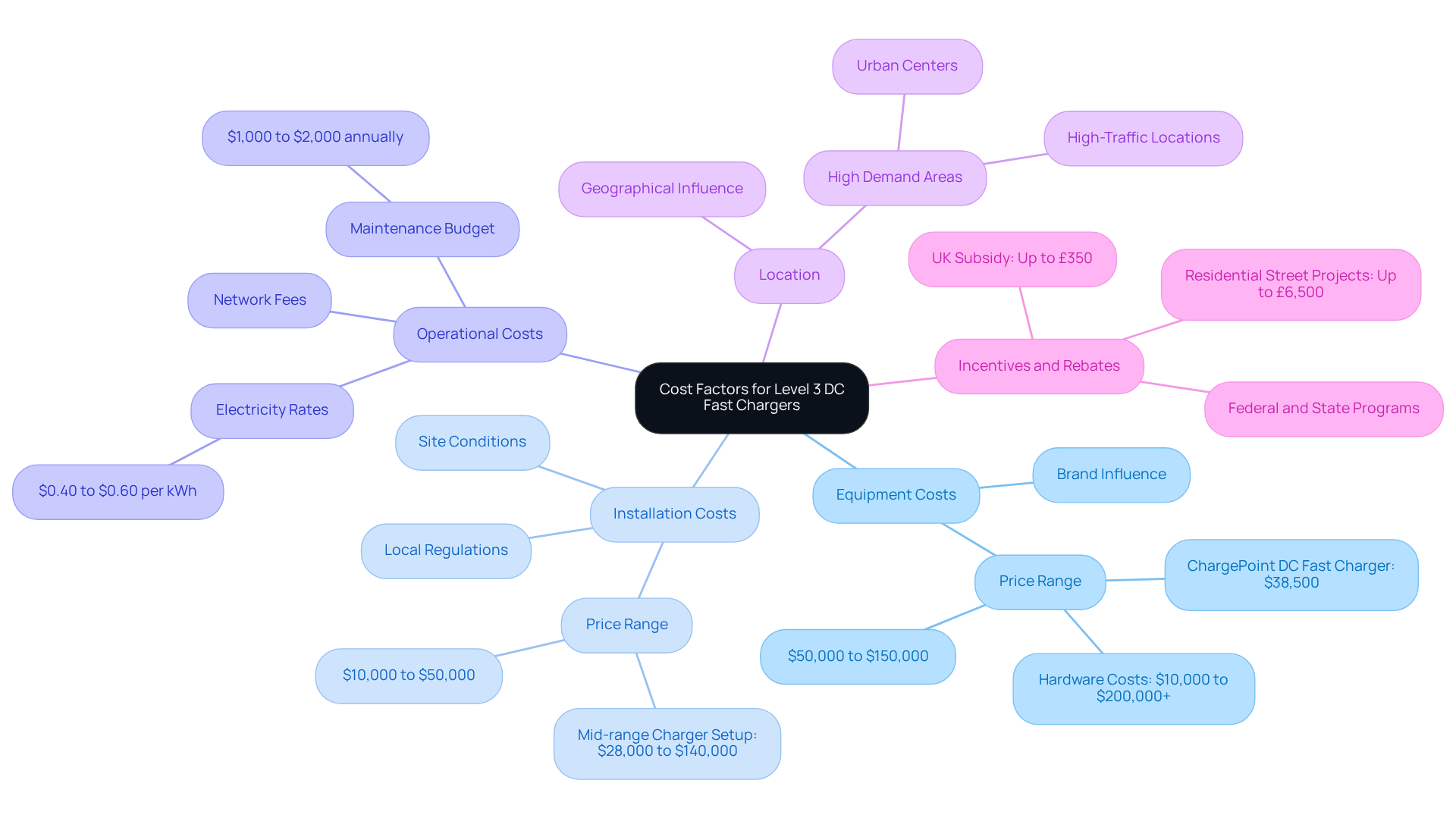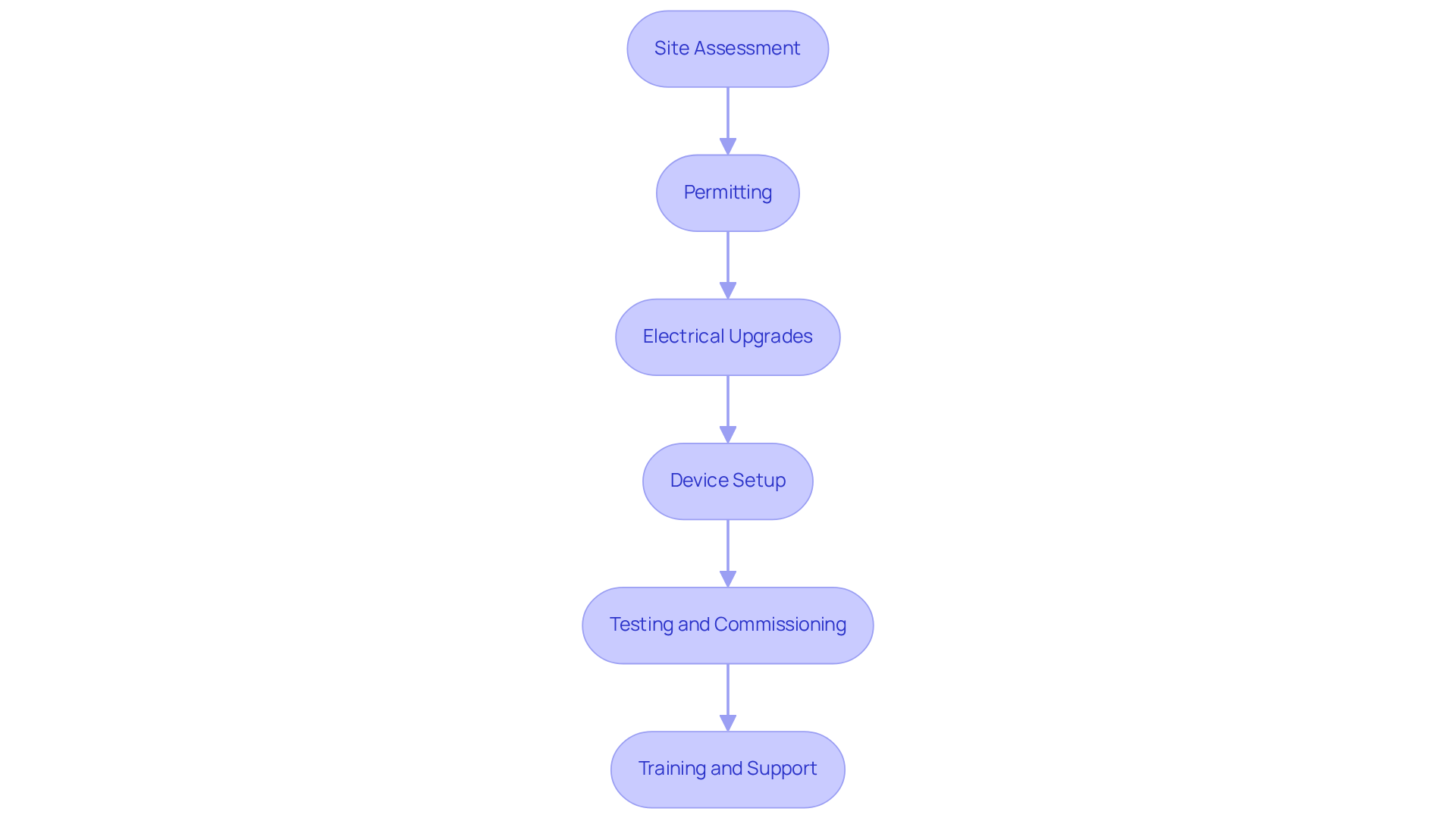Overview
We understand that when it comes to the cost of Level 3 DC fast chargers, many homeowners have pressing concerns about their energy bills and the overall investment in charging infrastructure. The title “Understanding Level 3 DC Fast Charger Cost: Key Factors Explained” addresses these very questions, shedding light on the various factors that influence costs. Key determinants include:
- Equipment and installation expenses
- Ongoing operational costs
- Geographical location
- Available incentives
By grasping these elements, you can make informed decisions that not only benefit your wallet but also contribute to a more sustainable future. Together, we can explore these insights and work towards a solution that aligns with your energy independence goals.
Introduction
As the demand for electric vehicles continues to rise, understanding the financial implications of Level 3 DC fast chargers becomes increasingly important. We recognize that the prospect of investing in advanced charging systems can feel daunting, especially with the promise of rapid power delivery that significantly reduces downtime for EV owners. However, it’s essential to consider that the costs associated with installation and operation can vary widely.
What factors contribute to these expenses?
How can you, as a potential buyer, navigate the complexities of pricing, installation, and maintenance?
Together, we can explore these questions to empower you in making informed decisions that align with your values and needs.
Explore Level 3 DC Fast Charging: Basics and Benefits
Are you concerned about the time it takes to charge your electric vehicle? Tier 3 DC rapid power supply, also known as Direct Current Fast Charging (DCFC), offers the quickest method for replenishing electric vehicles (EVs). Unlike types 1 and 2 devices that use alternating current (AC), type 3 systems deliver direct current (DC) straight to the vehicle’s battery, significantly reducing charging time.
Benefits of Level 3 Charging:
- Speed: Imagine being able to charge your EV to 80% in as little as 30 minutes! This rapid charging capability is essential for long-distance travel, especially as projections indicate that by 2030, EVs are expected to make up over 50% of the new vehicle market in the U.S.
- Convenience: With the expanding network of DC fast chargers, you can quickly recharge during road trips, minimizing downtime. The U.S. will need an estimated 182,000 DC fast power station ports to support the anticipated number of EVs by 2030, highlighting the importance of enhancing this infrastructure.
- Cost-Effectiveness: While the initial investment may be higher, the is justified by the efficiency and speed of power delivery, which can lead to lower operational costs over time, particularly for commercial applications. A recent study revealed that the average expense per kWh for rapid power delivery across the U.S. varies, with many states averaging between $0.46 to $0.51, making it a viable option for businesses.
- Sustainability: By enabling quicker power replenishment, these stations promote the adoption of electric vehicles, contributing to reduced carbon emissions and encouraging cleaner energy use. Industry leaders emphasize that expanding DC fast power supply infrastructure is vital for alleviating range anxiety among consumers, thus accelerating the transition to electric mobility.
We understand that advancements in Tier 3 power technology make these stations even more appealing. Improvements in charging speeds and the integration of smart technologies enhance user-friendliness and efficiency. As the demand for EVs continues to rise, the role of third-tier charging stations in facilitating this transition cannot be overstated. Together, we can embrace a future where electric vehicle ownership is not just feasible but also fulfilling.
Analyze Cost Factors for Level 3 DC Fast Chargers
Understanding the level 3 dc fast charger cost is essential for those concerned about energy expenses and seeking sustainable solutions. The cost can vary significantly based on several key factors:
- Equipment Costs: The price of the charger itself typically ranges from $50,000 to over $150,000, influenced by the power output and brand. For instance, a ChargePoint DC Fast Charger can retail for around $38,500, while other models may exceed this price depending on their specifications.
- Installation Costs: Installation expenses can add an additional $10,000 to $50,000. These costs are influenced by site conditions, necessary electrical upgrades, and local regulations. For example, the setup of a mid-range commercial DC Fast Charger can cost between $28,000 and over $140,000, reflecting the complexity of the setup process.
- Operational Costs: Ongoing expenses include electricity rates, maintenance, and potential network fees. Charging rates typically range from $0.40 to $0.60 per kWh, which can significantly impact the profitability of commercial stations. It’s wise to set aside an annual maintenance budget of $1,000 to $2,000 to ensure the longevity of the power equipment.
- Location: The geographical placement of the charger can influence both setup and operational costs. Areas with higher demand for EV charging, such as urban centers or high-traffic locations, may justify higher prices due to increased usage and potential revenue generation.
- Incentives and Rebates: Various federal and state incentives can help offset costs, making it essential to research available programs that can reduce the overall investment. For example, in the UK, the highest financial support for home and workplace setups can reach up to £350, while residential street projects may qualify for up to £6,500, which can include the level 3 dc fast charger cost.
We understand that navigating these elements can feel overwhelming, especially for companies and property owners contemplating the . However, comprehending these factors is crucial, as they can greatly affect your overall expenses and return on investment. Together, let’s explore how these insights can empower you to make informed decisions for a sustainable future.
Understand the Installation Process for Level 3 DC Fast Chargers
Installing a Level 3 DC fast charger can seem daunting, but understanding the essential steps can ease your concerns and lead to a successful installation that meets your needs.
- Site Assessment: We understand that evaluating your location is crucial. A comprehensive site assessment identifies the available area, electrical capacity, and accessibility for both the device and maintenance personnel. Industry professionals emphasize that a well-conducted site assessment can prevent costly modifications later in the process. For instance, a recent project in California demonstrated how a thorough site evaluation uncovered potential electrical enhancements required prior to setup, ultimately saving the homeowner substantial expenses.
- Permitting: Securing the necessary permits from local authorities is a vital step in this journey. This may include obtaining electrical and zoning permits, which can vary significantly by location. In California, the typical duration for approving Stage 3 DC rapid charging stations can range from a few weeks to several months, depending on local regulations and the intricacy of the setup. According to the President of Qmerit, “Understanding local permitting processes is essential for a smooth installation experience.”
- Electrical Upgrades: Given the high power demands of Level 3 charging stations, it’s common to feel uncertain about whether your current electrical infrastructure is adequate. Often, enhancing transformers or service panels is necessary to accommodate the increased load, ensuring that your system can handle the demands of fast charging.
- Device Setup: It’s essential that the setup of the unit conforms to manufacturer guidelines while adhering to local regulations and standards. Correct setup is vital to guarantee safety and functionality, as well as to enhance the device’s efficiency.
- Testing and Commissioning: After installation, thorough testing is essential to confirm that the device operates correctly and safely. This step ensures that all systems are functioning as expected before the device becomes available for public or private use.
- Training and Support: Finally, providing training for users and maintenance staff is important for the ongoing operation and upkeep of the charging station. This training helps ensure that all personnel are familiar with the device’s features and maintenance requirements, promoting longevity and reliability.
By following these steps, homeowners and businesses can effectively install Tier 3 DC fast chargers, which will help manage the level 3 dc fast charger cost and contribute to the growing infrastructure needed to support electric vehicle adoption. Additionally, it’s important to consider that the level 3 dc fast charger cost for charging averages approximately 40-50 cents per kilowatt-hour, which can impact your overall financial considerations for installation. Together, we can navigate these steps and ensure a .
Conclusion
Understanding the cost of Level 3 DC fast chargers is essential for those considering an investment in electric vehicle infrastructure. We recognize that navigating these costs can be daunting, yet these fast chargers not only provide the ability to recharge EVs swiftly, but they also play a vital role in our collective transition to electric mobility. By exploring the various factors influencing the overall cost—from equipment and installation expenses to operational costs and available incentives—stakeholders can make informed choices that align with their sustainability aspirations.
The key benefits of Level 3 charging underscore its speed and convenience, which are crucial for minimizing downtime on long journeys. While the initial investments may seem considerable, our analysis reveals that the long-term advantages, such as reduced operational costs and the potential for revenue generation, can indeed outweigh these upfront expenses. Additionally, grasping the installation process allows businesses and homeowners to navigate the complexities involved, ultimately leading to a successful setup that meets their unique needs.
As the demand for electric vehicles continues to grow, the significance of establishing a robust network of Level 3 DC fast chargers is paramount. Embracing this technology not only enhances the convenience of EV ownership but also contributes to a sustainable future we all strive for. We encourage stakeholders to explore the available incentives and conduct thorough research to maximize their investments. Together, we can play an integral role in shaping a cleaner, more efficient transportation landscape.
